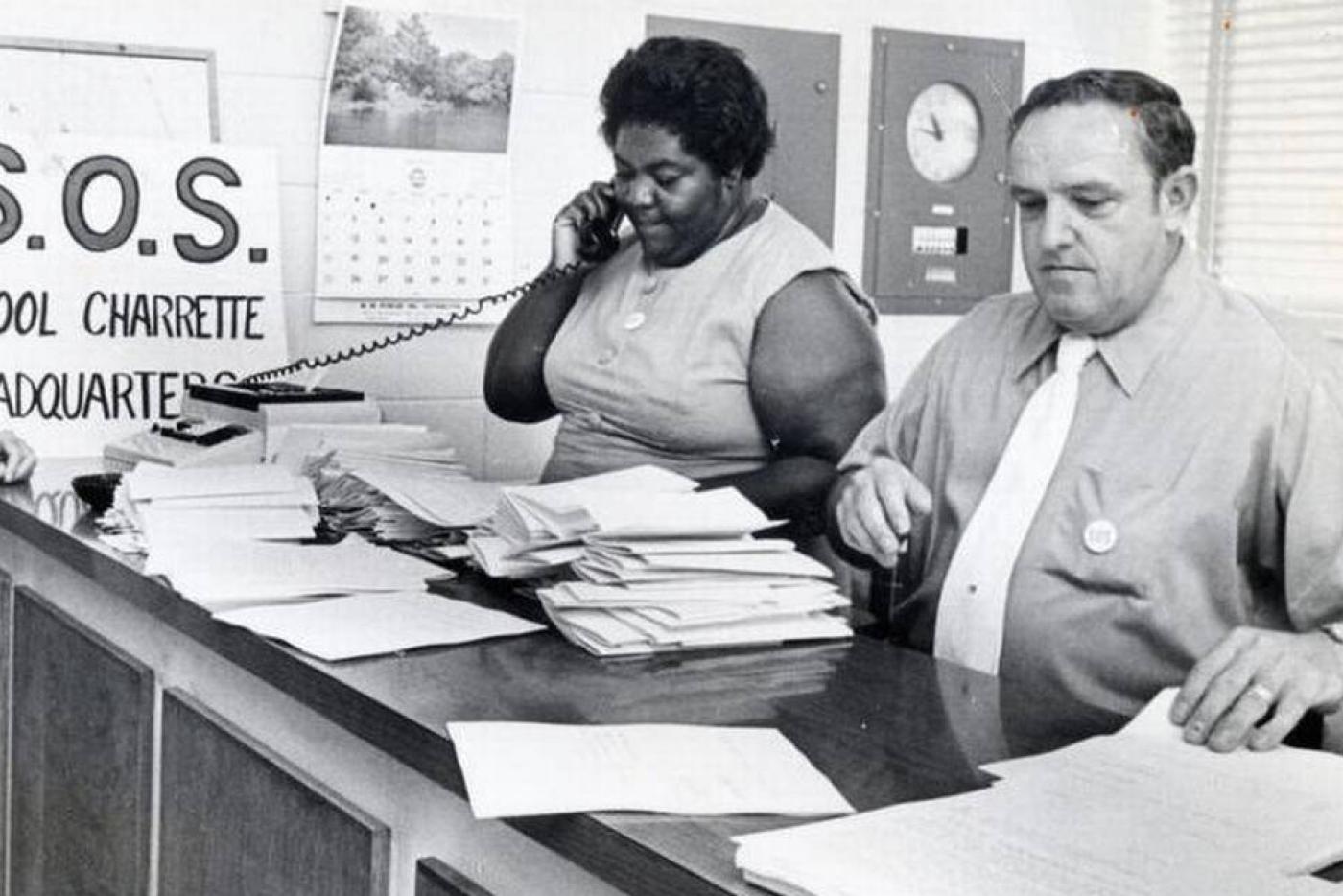
Who was Cp Ellis? Cp Ellis was a man whose life story is a powerful testament to the possibility of change and redemption. Born into poverty in the South, he joined the Ku Klux Klan, seeking a sense of belonging and purpose. However, his journey took an unexpected turn when he met Ann Atwater, a Black civil rights activist. Their unlikely friendship and collaboration during a school desegregation project in Durham, North Carolina, transformed Ellis's views on race and equality. Cp Ellis's story is a compelling example of how understanding and empathy can bridge even the deepest divides.
Key Takeaways:
- C.P. Ellis's remarkable journey from Klan leader to civil rights activist teaches us that change is possible, no matter our past. His story inspires us to embrace forgiveness, empathy, and the power of personal relationships.
- Ellis's life underscores the importance of education, courage, and leadership in promoting understanding and equality. His transformation serves as a powerful reminder that redemption is always within reach.
Who Was C.P. Ellis?
C.P. Ellis was a man whose life story is both compelling and transformative. His journey from a Ku Klux Klan leader to a civil rights activist is a testament to the power of change and redemption.
-
C.P. Ellis was born on January 8, 1927, in Durham, North Carolina. His early years were marked by poverty and hardship, which shaped much of his worldview.
-
Ellis dropped out of school in the eighth grade. Financial struggles forced him to leave school and work to support his family.
-
He joined the Ku Klux Klan in the 1960s. Seeking a sense of belonging and purpose, Ellis found it in the Klan, where he quickly rose through the ranks.
-
Ellis became the Exalted Cyclops of the Durham Klan chapter. This title made him the leader of his local Klan group, giving him significant influence.
The Turning Point in Ellis's Life
A pivotal moment in Ellis's life came when he was asked to co-chair a committee with Ann Atwater, a Black civil rights activist. This unlikely partnership would change everything.
-
In 1971, Ellis co-chaired a charrette on school desegregation. The charrette aimed to address racial tensions in Durham schools.
-
Ellis and Atwater initially distrusted each other. Their first interactions were filled with hostility and suspicion.
-
Over time, Ellis and Atwater developed a mutual respect. Working closely together, they began to see each other as individuals rather than enemies.
-
Ellis renounced his Klan membership. The experience with Atwater led him to leave the Klan and reject its racist ideology.
Life After the Klan
After leaving the Klan, Ellis dedicated his life to promoting racial equality and understanding. His transformation inspired many and demonstrated the possibility of change.
-
Ellis became a labor union organizer. He worked to improve conditions for workers of all races.
-
He spoke publicly about his transformation. Ellis shared his story to encourage others to overcome prejudice.
-
Ellis and Atwater remained friends. Their unlikely friendship lasted until Ellis's death.
-
Ellis's story was featured in the book "The Best of Enemies." Written by Osha Gray Davidson, the book chronicles the relationship between Ellis and Atwater.
Legacy and Impact
C.P. Ellis's life serves as a powerful example of personal growth and the impact of empathy and understanding.
-
Ellis's story was adapted into a film. "The Best of Enemies," released in 2019, stars Taraji P. Henson and Sam Rockwell.
-
He received recognition for his civil rights work. Ellis's efforts were acknowledged by various organizations and individuals.
-
Ellis's journey is studied in schools. His life story is used as a teaching tool to discuss racism and redemption.
-
He inspired others to leave hate groups. Ellis's transformation encouraged others to reconsider their beliefs and actions.
-
Ellis's story highlights the power of dialogue. His experience shows that open communication can bridge even the deepest divides.
Personal Life and Death
Despite his controversial past, Ellis's later years were marked by a commitment to justice and equality.
-
Ellis was married to Mary Ellis. They had four children together.
-
He struggled with guilt over his past actions. Ellis often spoke about the remorse he felt for his time in the Klan.
-
Ellis passed away on November 3, 2005. He died of Alzheimer's disease at the age of 78.
-
His funeral was attended by people of all races. This diverse attendance reflected the impact of his transformation.
The Broader Context
Ellis's story is part of a larger narrative about race relations in America and the potential for change.
-
The civil rights movement influenced Ellis's transformation. The movement's emphasis on equality and justice resonated with him.
-
Ellis's story is a reminder of the importance of empathy. Understanding others' experiences can lead to profound personal change.
-
His life illustrates the complexity of human nature. Ellis's journey shows that people are capable of both great harm and great good.
-
Ellis's transformation was not easy. It required confronting deeply held beliefs and facing the consequences of his past actions.
-
His story challenges stereotypes. Ellis defied expectations by changing his views and actions.
-
Ellis's life is a testament to the power of personal relationships. His friendship with Atwater was crucial to his transformation.
Lessons from Ellis's Life
C.P. Ellis's story offers valuable lessons about forgiveness, redemption, and the possibility of change.
-
Ellis's life shows that change is possible at any age. He transformed his beliefs and actions later in life.
-
His story emphasizes the importance of education. Learning about others' experiences can challenge and change prejudices.
-
Ellis's journey highlights the role of courage in personal growth. It takes bravery to confront and change deeply held beliefs.
-
His life underscores the impact of leadership. As a leader in both the Klan and the civil rights movement, Ellis influenced others.
-
Ellis's story is a call to action. It encourages individuals to work towards understanding and equality.
-
His transformation was a gradual process. Change took time and required ongoing effort.
-
Ellis's life demonstrates the power of forgiveness. Both giving and receiving forgiveness were crucial to his journey.
-
His story is a reminder of the importance of community. Support from others helped Ellis change his life.
-
Ellis's life shows that redemption is possible. Despite his past, he made significant positive contributions.
-
His story continues to inspire. Ellis's journey from hate to understanding remains a powerful example of personal transformation.
Reflecting on Cp Ellis
Cp Ellis's life story is a powerful reminder of how people can change. From being a Ku Klux Klan leader to becoming a civil rights advocate, his journey shows that transformation is possible. His friendship with Ann Atwater, an African American activist, played a huge role in this change. They worked together to improve race relations in Durham, North Carolina, proving that understanding and cooperation can bridge even the widest gaps.
Ellis's story also highlights the importance of education and open dialogue. By learning about each other's struggles and perspectives, they found common ground. This tale encourages us to look beyond our prejudices and work towards a more inclusive society. Cp Ellis's life teaches us that no matter our past, we can always choose a better path. His legacy continues to inspire those striving for equality and justice.
Frequently Asked Questions
Was this page helpful?
Our commitment to delivering trustworthy and engaging content is at the heart of what we do. Each fact on our site is contributed by real users like you, bringing a wealth of diverse insights and information. To ensure the highest standards of accuracy and reliability, our dedicated editors meticulously review each submission. This process guarantees that the facts we share are not only fascinating but also credible. Trust in our commitment to quality and authenticity as you explore and learn with us.


